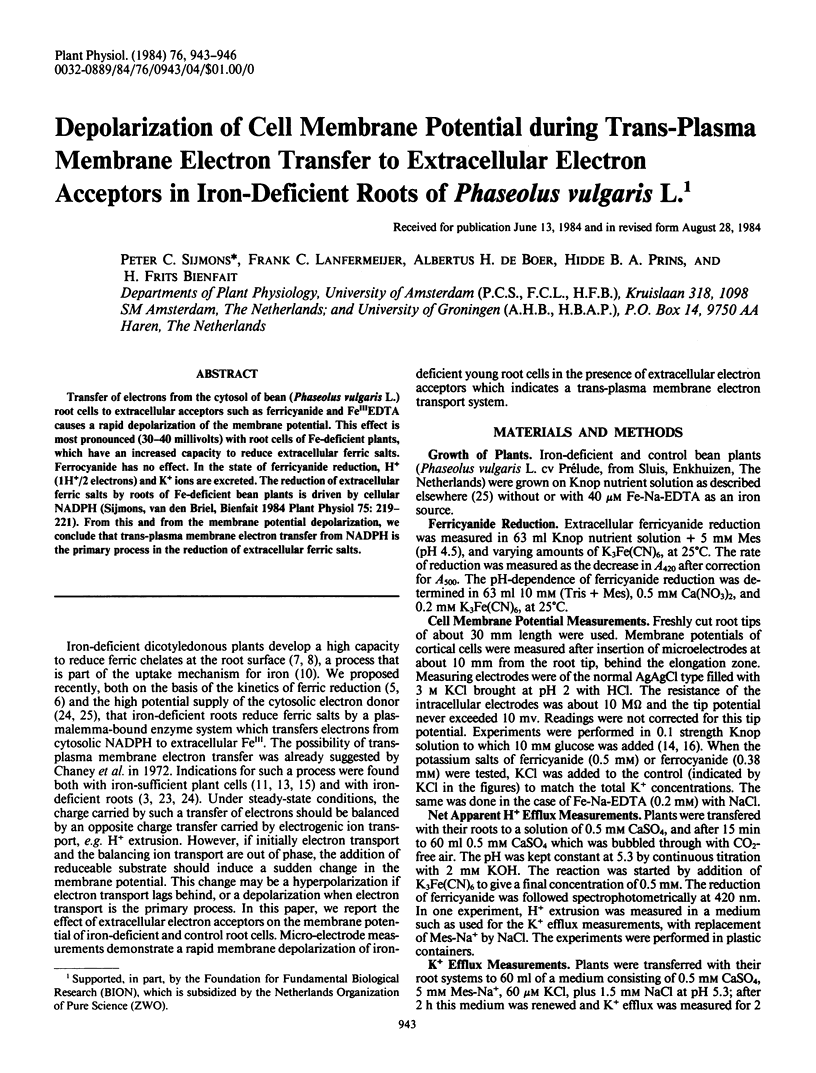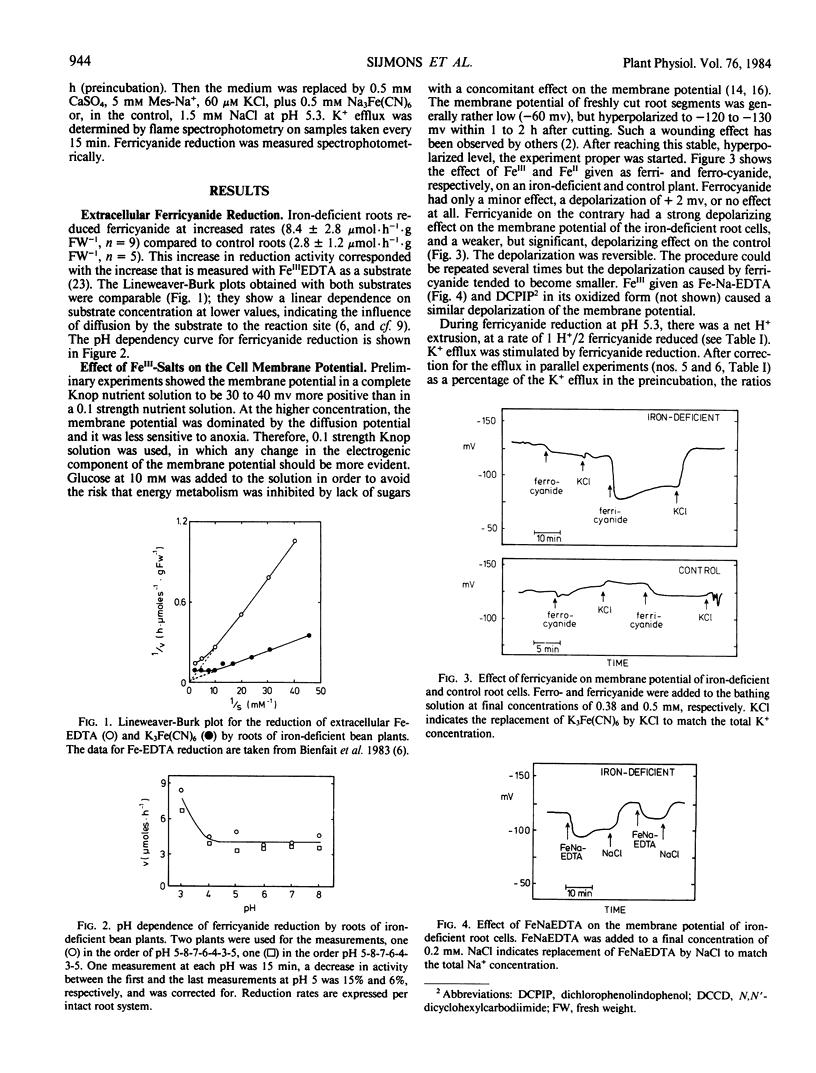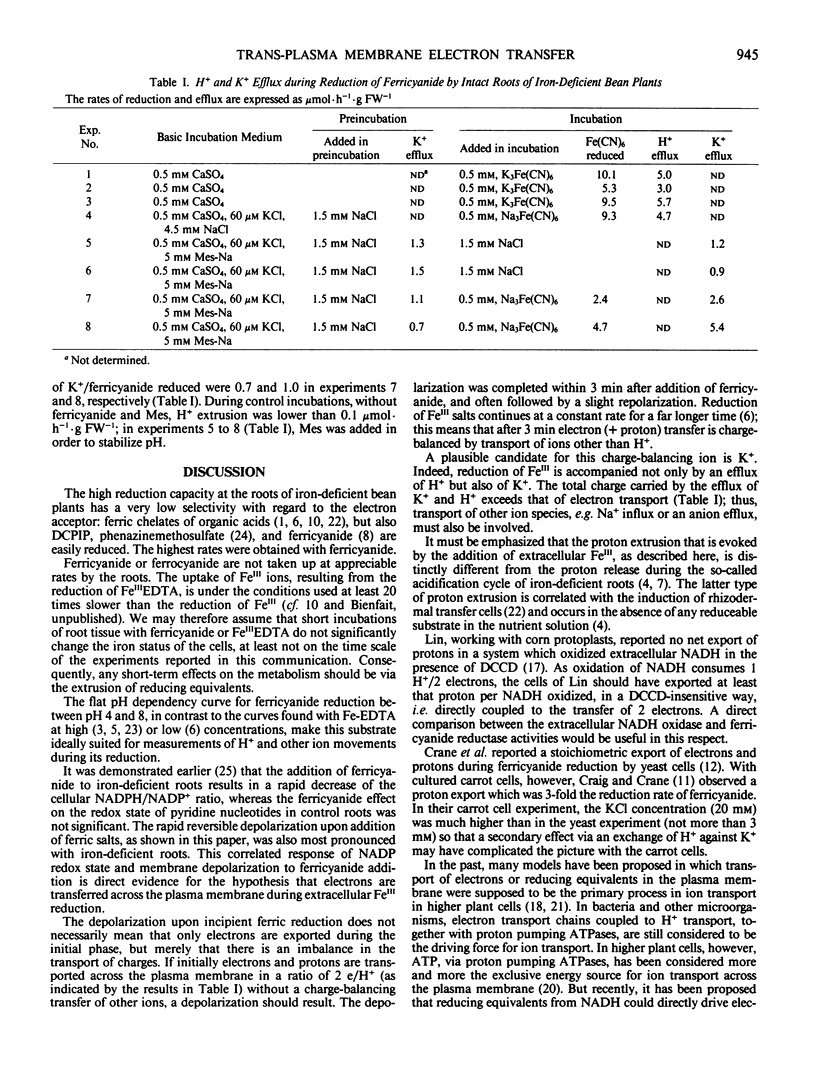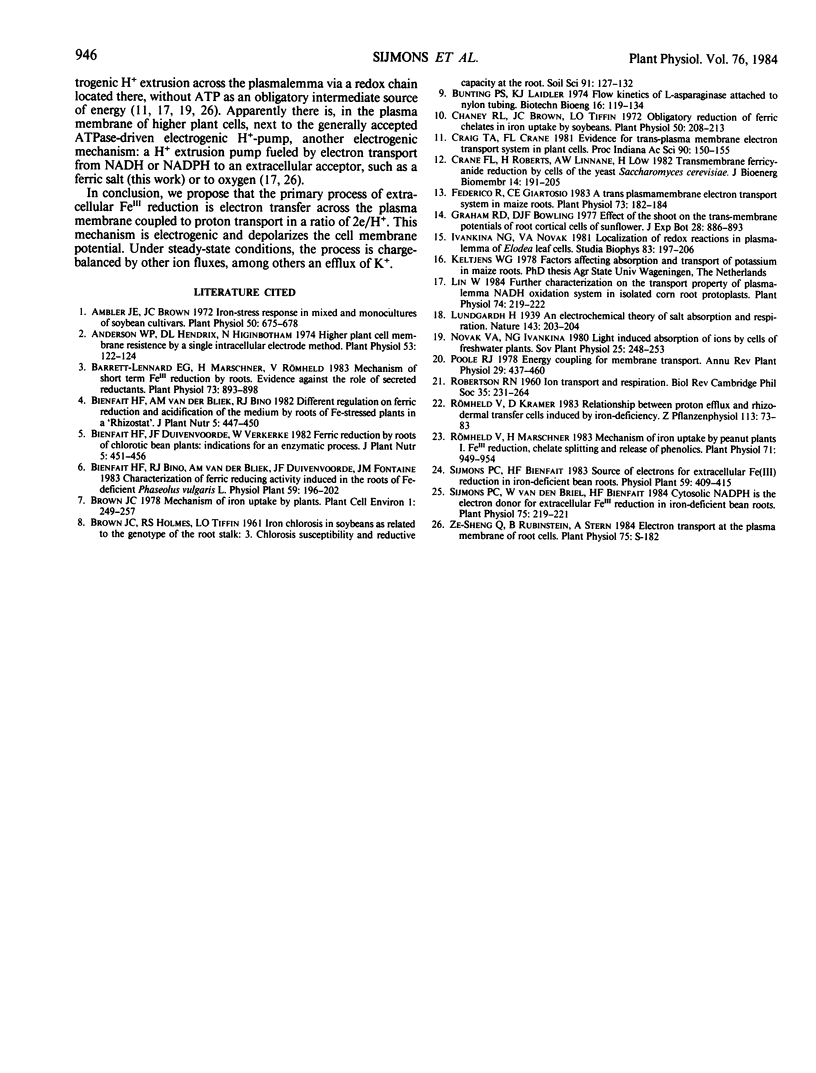Abstract
Transfer of electrons from the cytosol of bean (Phaseolus vulgaris L.) root cells to extracellular acceptors such as ferricyanide and FeIIIEDTA causes a rapid depolarization of the membrane potential. This effect is most pronounced (30-40 millivolts) with root cells of Fe-deficient plants, which have an increased capacity to reduce extracellular ferric salts. Ferrocyanide has no effect. In the state of ferricyanide reduction, H+ (1H+/2 electrons) and K+ ions are excreted. The reduction of extracellular ferric salts by roots of Fe-deficient bean plants is driven by cellular NADPH (Sijmons, van den Briel, Bienfait 1984 Plant Physiol 75: 219-221). From this and from the membrane potential depolarization, we conclude that trans-plasma membrane electron transfer from NADPH is the primary process in the reduction of extracellular ferric salts.
Full text
PDF



Selected References
These references are in PubMed. This may not be the complete list of references from this article.
- Ambler J. E., Brown J. C. Iron-stress Response in Mixed and Monocultures of Soybean Cultivars. Plant Physiol. 1972 Dec;50(6):675–678. doi: 10.1104/pp.50.6.675. [DOI] [PMC free article] [PubMed] [Google Scholar]
- Anderson W. P., Hendrix D. L., Higinbotham N. Higher plant cell membrane resistance by a single intracellular electrode method. Plant Physiol. 1974 Jan;53(1):122–124. doi: 10.1104/pp.53.1.122. [DOI] [PMC free article] [PubMed] [Google Scholar]
- Barrett-Lennard E. G., Marschner H., Römheld V. Mechanism of Short Term Fe Reduction by Roots : Evidence against the Role of Secreted Reductants. Plant Physiol. 1983 Dec;73(4):893–898. doi: 10.1104/pp.73.4.893. [DOI] [PMC free article] [PubMed] [Google Scholar]
- Bunting P. S., Laidler K. J. Flow kinetics of L-asparaginase attached to nylon tubing. Biotechnol Bioeng. 1974 Jan;16(1):119–134. doi: 10.1002/bit.260160109. [DOI] [PubMed] [Google Scholar]
- Chaney R. L., Brown J. C., Tiffin L. O. Obligatory reduction of ferric chelates in iron uptake by soybeans. Plant Physiol. 1972 Aug;50(2):208–213. doi: 10.1104/pp.50.2.208. [DOI] [PMC free article] [PubMed] [Google Scholar]
- Crane F. L., Roberts H., Linnane A. W., Löw H. Transmembrane ferricyanide reduction by cells of the yeast Saccharomyces cerevisiae. J Bioenerg Biomembr. 1982 Jun;14(3):191–205. doi: 10.1007/BF00745020. [DOI] [PubMed] [Google Scholar]
- Federico R., Giartosio C. E. A transplasmamembrane electron transport system in maize roots. Plant Physiol. 1983 Sep;73(1):182–184. doi: 10.1104/pp.73.1.182. [DOI] [PMC free article] [PubMed] [Google Scholar]
- Lin W. Further Characterization on the Transport Property of Plasmalemma NADH Oxidation System in Isolated Corn Root Protoplasts. Plant Physiol. 1984 Feb;74(2):219–222. doi: 10.1104/pp.74.2.219. [DOI] [PMC free article] [PubMed] [Google Scholar]
- Römheld V., Marschner H. Mechanism of iron uptake by peanut plants : I. Fe reduction, chelate splitting, and release of phenolics. Plant Physiol. 1983 Apr;71(4):949–954. doi: 10.1104/pp.71.4.949. [DOI] [PMC free article] [PubMed] [Google Scholar]
- Sijmons P. C., van den Briel W., Bienfait H. F. Cytosolic NADPH is the electron donor for extracellular fe reduction in iron-deficient bean roots. Plant Physiol. 1984 May;75(1):219–221. doi: 10.1104/pp.75.1.219. [DOI] [PMC free article] [PubMed] [Google Scholar]


